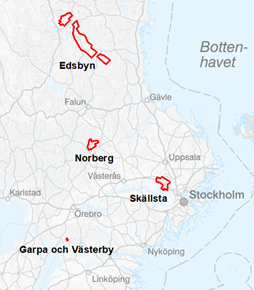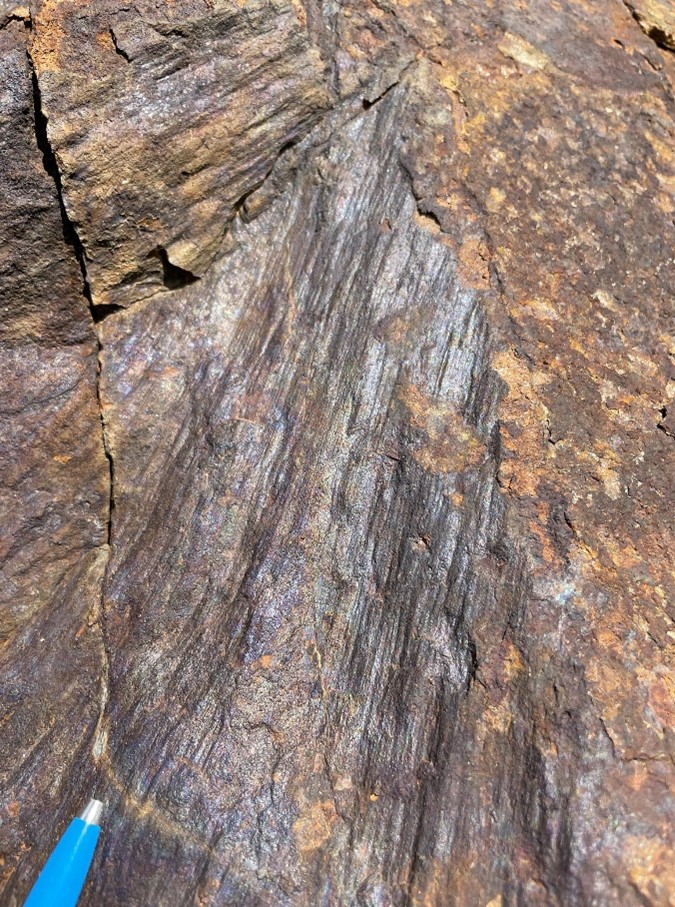
Photo: Pauline Jeanneret
Mapping of graphite in Bergslagen and western Hälsingland
The demand for natural graphite is increasing in the EU. Therefore, it is important to identify high-quality graphite deposits. The best-known flake graphite deposit in Sweden is found in the Woxna mine outside Edsbyn in Gävleborg County, and this project focuses on providing a basis for understanding the factors that have contributed to the high quality.
The Geological Survey of Sweden's (SGU) mapping work in the area around Edsbyn and at various locations in Bergslagen involves surveying several graphite deposits in different geological environments and comparing their quality and formation conditions. The project started in 2024, and the aim is to gain knowledge that can contribute to successful prospecting for more high-quality graphite deposits.
A high degree of metamorphism is a possible factor contributing to a good graphite deposit. Therefore, it is crucial to better understand the behavior of graphite during metamorphic processes. Metamorphic investigations have been conducted in the region, but more local work with modern methods and sampling focused on the current issue is required.
We also need to understand the role deformation has played in the concentration of graphite:
- Is graphite more concentrated in larger structures?
- How does fluid-rock interaction related to these structures affect the quality of graphite?
The overall aim of the project is therefore to better define the structural and metamorphic development over time of the graphite deposits and the surrounding bedrock in the Edsbyn area and also in Bergslagen, where three other areas of interest have been identified: Norberg, Skällsta, and Garpa and Västerby mines.

Map of the planned areas of investigation within the project.
Why we are surveying here
The current areas are considered particularly interesting due to historical graphite mining but also because most of them are subject to ongoing prospecting. The selected graphite deposits belong to different lithotectonic units and can be associated with different geological backgrounds. By comparing lithological properties, ages, degrees of metamorphism, and deformation regimes of the surrounding bedrock in these different areas, and comparing this with graphite crystallinity, we can better understand what is required to find world-class graphite deposits.

Graphite-rich surface in migmatitic garnet-biotite-sillimanite-cordierite gneiss from the Kringeltjärn graphite deposit in the Edsbyn area.
Photo: Pauline Jeanneret
Last reviewed 2025-02-28
